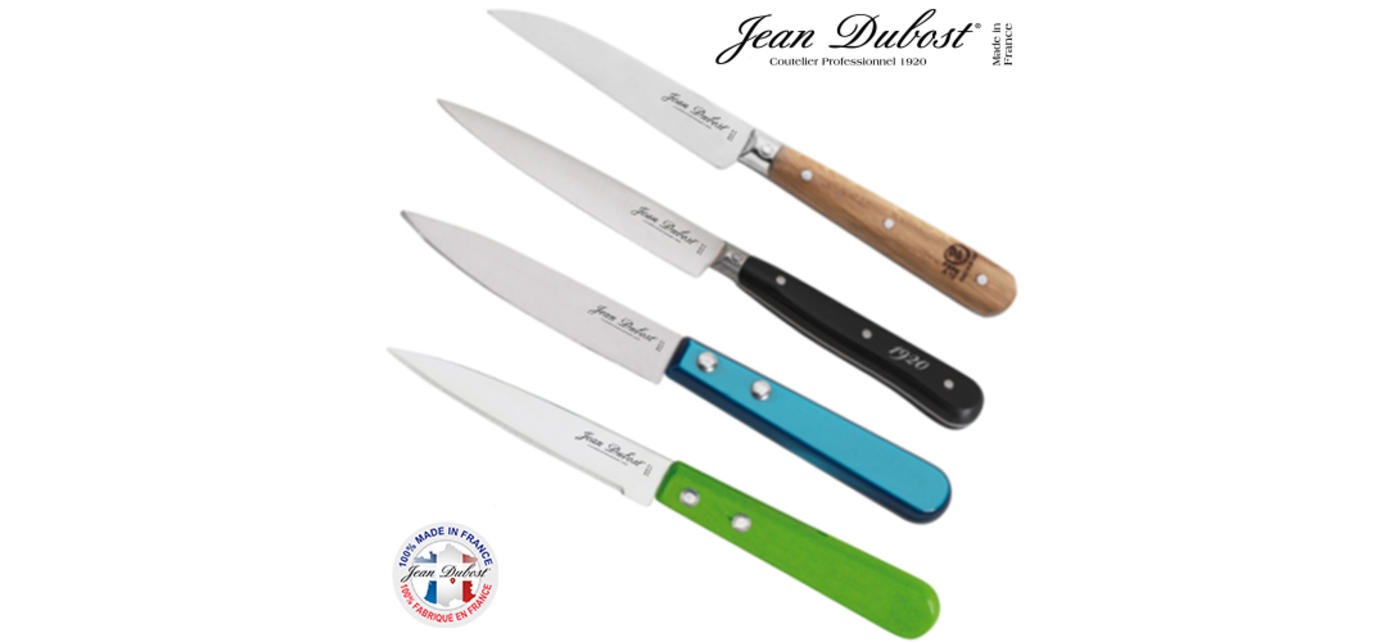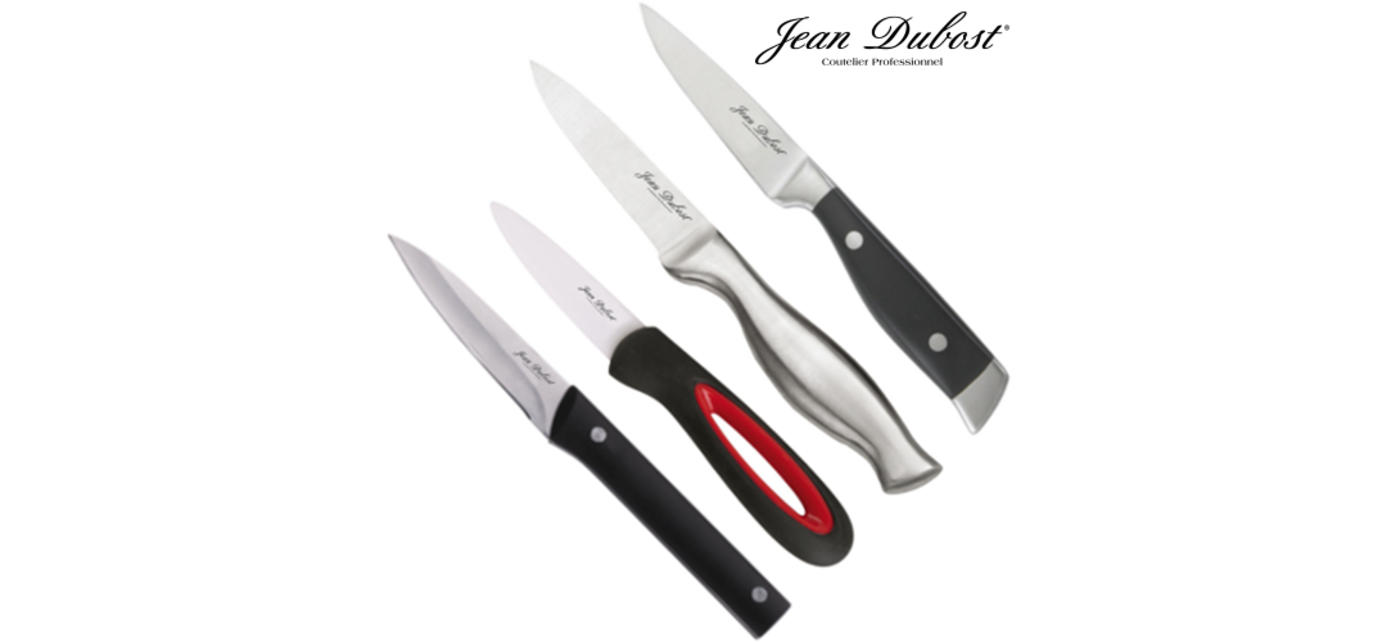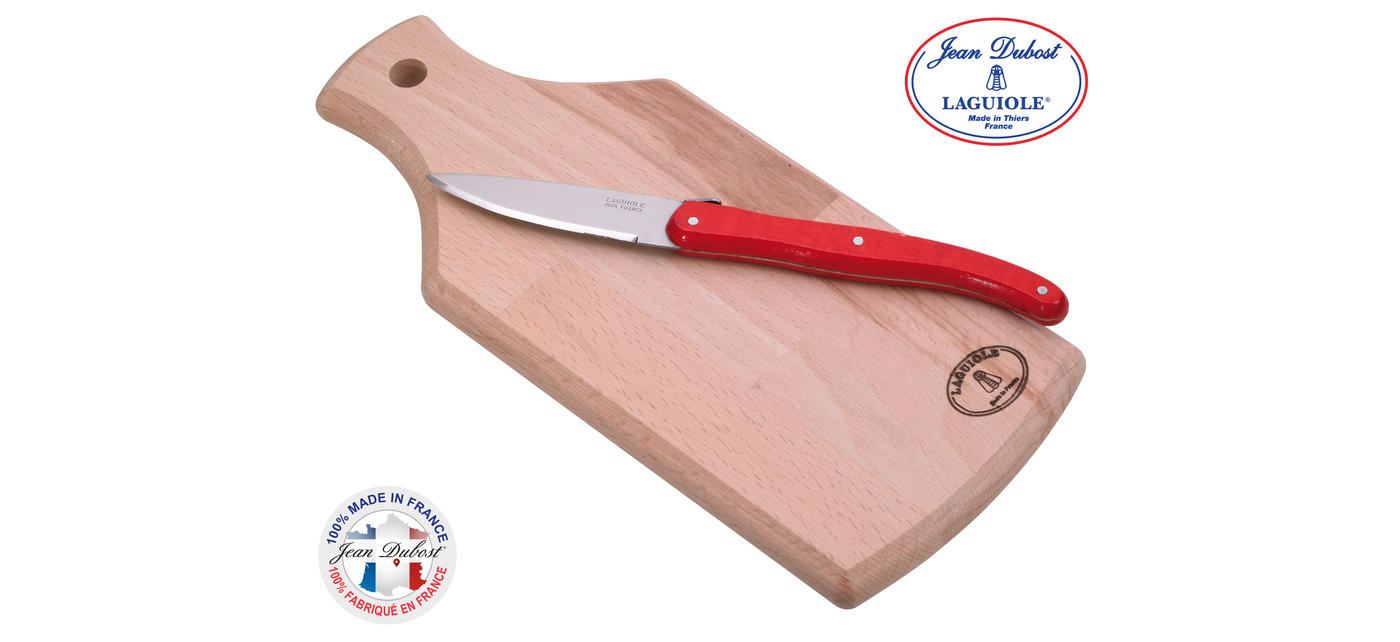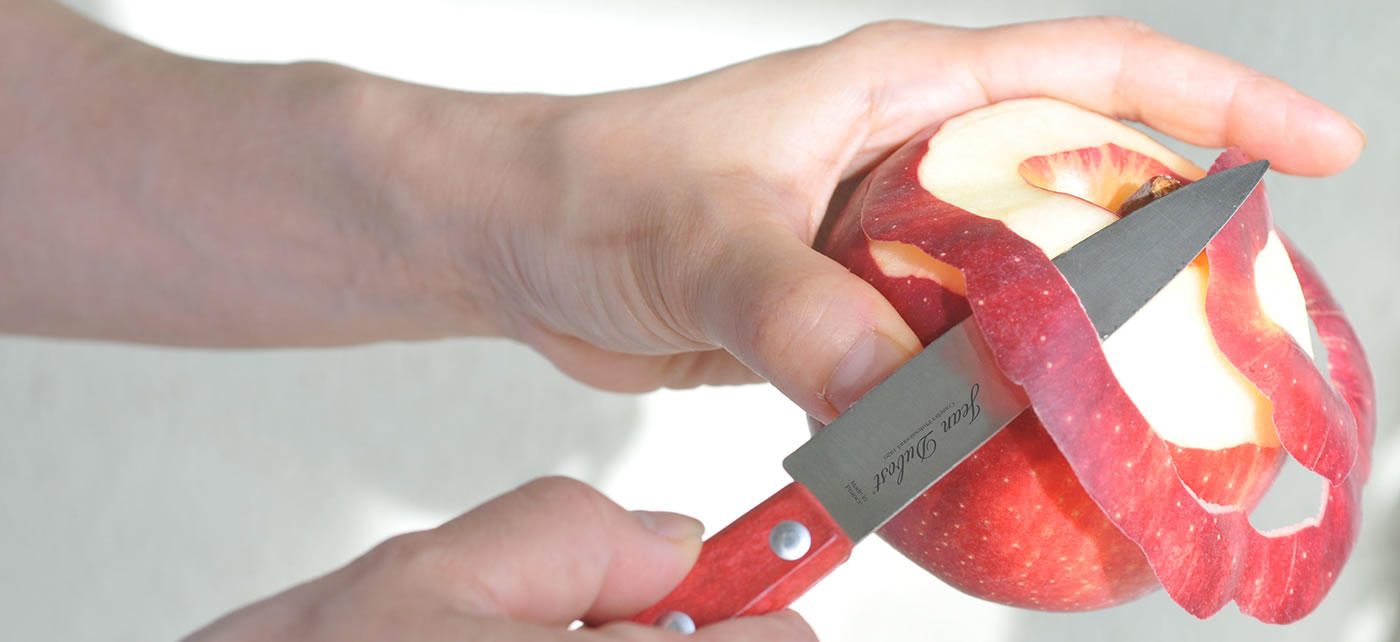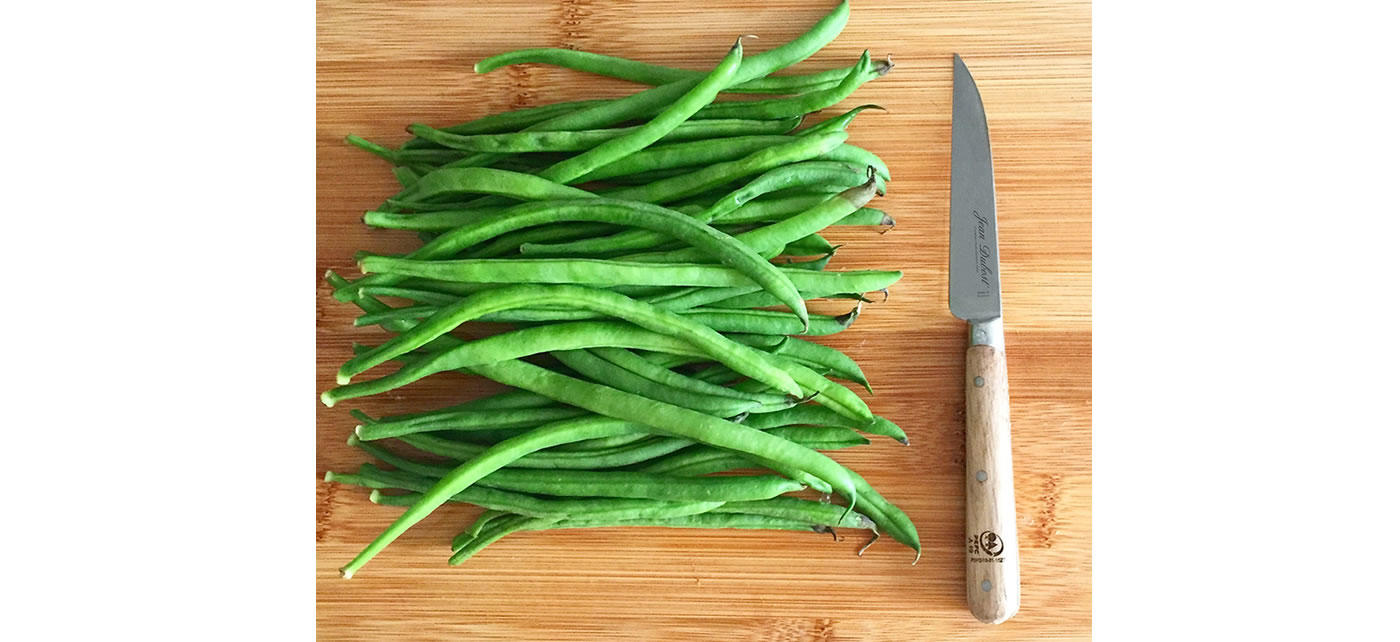-
Home page
-
Merchandising
-
With each knife its use
-
Paring knife
How do you use a paring knife?
Cutting, peeling and slicing
With each knife its use
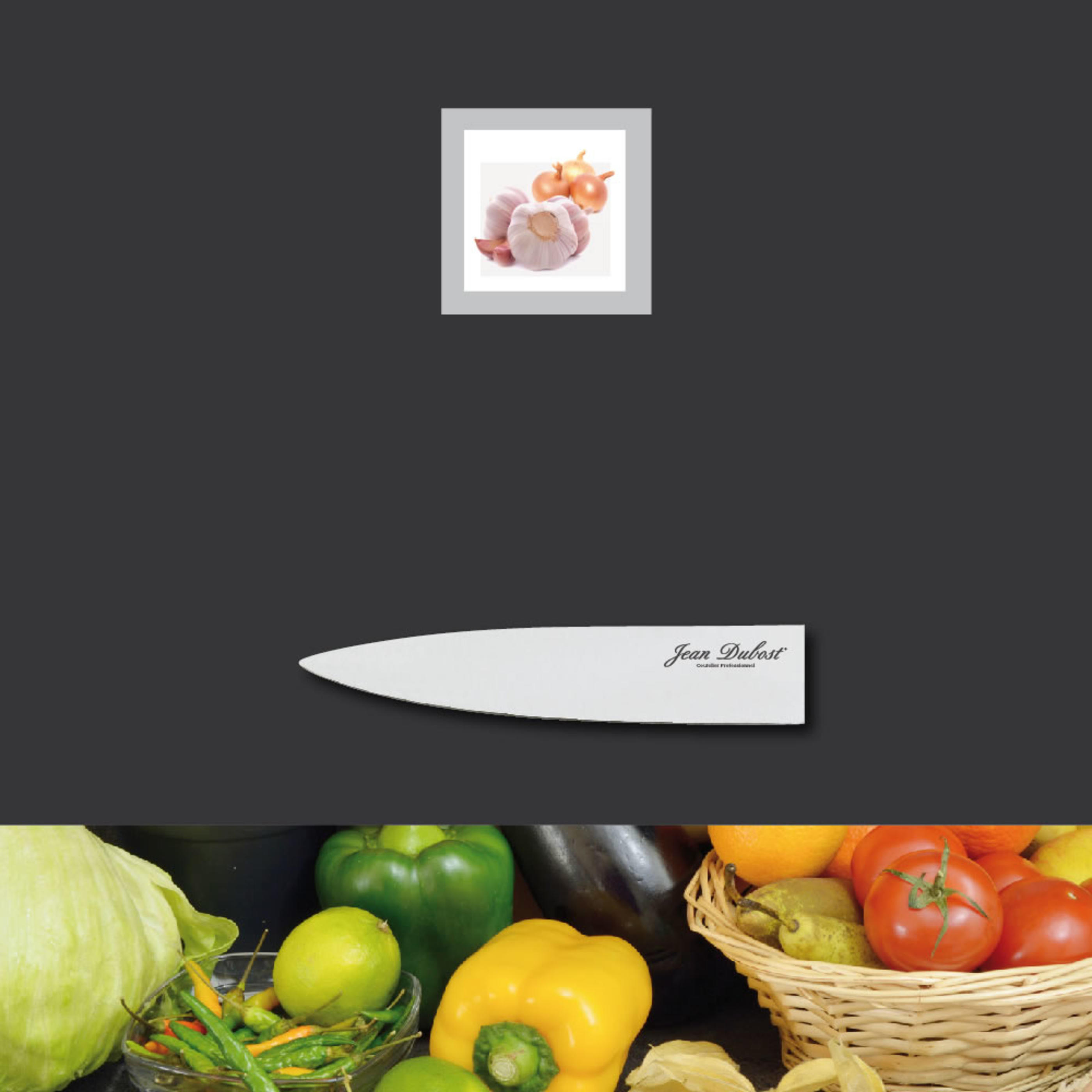
Paring knife
Cutting, peeling and slicing
Tips for using a paring knife
- Light, handy and very sharp, a paring knife is the smallest, yet most used knife.
- A paring knife is a short-bladed knife (8 - 10 cm), it is smooth, sharp-pointed and rigid
- It is ideal for peeling and cutting up small fruit and vegetables, dicing a clove of garlic, cleaning mushrooms, chopping up herbs...
- When the blade is straight, it is called a spear point when it is gently curved at the tip, it is called a sheep`s foot
- Jean Dubost offers a wide range of paring knives: stainless steel or ceramic blades, POM, natural or coloured wood, acrylic, or stainless steel handles.
- The steel used by Jean Dubost is a AISI 420 stainless steel which provides a high degree of hardness (HRC52/56 after heat treatment), excellent cut quality as well as a durable cutting edge and excellent resistance to corrosion.
- Sold individually or in a box set, Jean Dubost paring knives are also available with a chopping board,
- A true companion for your daily cooking needs, this knife is very easy to care for.
- To preserve the original cutting edge of your knife, it is important to sharpen it regularly. Jean Dubost sharpening tips can be found here.
- Cutler's tip: Use a wooden or natural resin chopping board (rather than glass) to protect the cutting edge of your blade!


